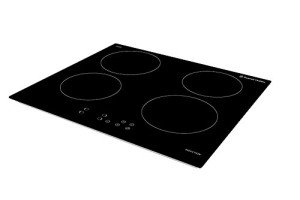10 Methods To Build Your Induction Hob Faq Empire
Induction Hob Installation: A Comprehensive Guide
Induction hobs have gained popularity in modern cooking areas due to their energy performance, speed, and precision in cooking. Unlike Induction Hob Ratings or electrical cooktops, induction hobs utilize electro-magnetic energy to directly warm pots and pans. This innovative innovation not just boosts cooking efficiency however also enhances security by lessening the risk of burns. Nevertheless, setting up an induction hob requires careful planning and factor to consider of various elements. This short article offers a detailed guide to induction hob installation, together with vital tips, benefits, and frequently asked questions.
Benefits of Induction Hobs
Before diving into the installation process, let's explore some benefits of induction hobs that make them a favored option for many homes:
- Energy Efficiency: Induction hobs use less energy as they move heat straight to pots and pans, causing faster cooking times and reduced energy costs.
- Safety: The surface of an induction hob does not get hot during cooking, substantially lowering the danger of burns or fire threats.
- Easy Cleaning: The flat surface of induction hobs makes them simple to clean, as spilled food does not get baked onto the surface.
- Precise Control: Induction hobs guarantee quick temperature modifications, allowing exact control over cooking temperatures.
Secret Considerations Before Installation
1. Electrical Requirements
Induction hobs need a greater electrical output compared to standard electrical hobs. Ensure that your electrical supply satisfies the requirements of your specific induction model, usually 3 kW to 7.4 kW.
2. Pots and pans Compatibility
Induction cooking counts on magnetic cookware. Simplistically, if a magnet stays with the bottom of your pots and pans, they are appropriate for induction cooking.
3. Worktop Specifications
Your kitchen worktop should support the weight of the induction hob and accommodate the installation measurements. Guarantee that the worktop material is heat-resistant and suitable for kitchen usage.
4. Space Utilization
Consider the offered space in your kitchen and how the induction hob will fit within that environment. You ought to likewise leave adequate clearance for air flow around the device.
Table 1: Induction Hob Dimensions and Space Requirements
Induction Hob Size
Minimum Installation Depth
Minimum Clearance Height
Advised Countertop Thickness
30 cm
60 cm
30 cm
2.5 cm to 4 cm
60 cm
60 cm
30 cm
2.5 cm to 4 cm
90 cm
60 cm
30 cm
2.5 cm to 4 cm
Step-by-Step Guide to Installing an Induction Hob
This section offers a detailed installation procedure, making sure that your induction hob is established securely and correctly.
Action 1: Gather Required Tools and Materials
- Induction hob
- Screwdriver
- Level
- Measuring tape
- Underlay or insulation materials
- Electrical wiring (speak with a professional electrical contractor)
Step 2: Prepare the Worktop
- Measure the Installation Area: Ensure that the worktop has adequate space for the hob. Utilize a measuring tape, and mark the outlines of the required cut.
- Cut the Opening: Using a suitable saw, cut the opening in the worktop, ensuring smooth edges.
- Tidy the Area: Remove any particles or dust from the cut location to get ready for installation.
Action 3: Position the Hob
- Place the Hob: Carefully position the hob in the ready opening, ensuring it is level.
- Protect with Clips: If your design comes with installation clips, use them to protect the hob to the worktop.
Step 4: Electrical Connection
- Connect to Power Supply: This action must be carried out by a certified electrical expert. Follow the producer's guidelines for electrical wiring, ensuring that all connections are safe and comply with local electrical guidelines.
Step 5: Check for Leaks
- After connecting the induction hob, turn it on to check its performance. Make sure there are no gaps between the hob and worktop that could result in water ingress.
Action 6: Finalize the Installation
- When evaluated, make sure that all screws are tightened, and the hob is flush with the worktop. Tidy the surface to remove any finger prints or debris.
Frequently Asked Questions about Induction Hob Installation
1. Is it safe to install an induction hob myself?
While DIY installation is possible for those with electrical understanding, it's advisable to employ an expert electrical expert to ensure safety and compliance with local regulations.
2. What are the common problems throughout installation?
Typical issues consist of inaccurate measurements, failure to check pots and pans compatibility, and inadequate electrical supply.
3. Can I install an induction hob over a drawer or cabinet?
It is not advised to install an induction hob straight over a drawer without appropriate heat insulations, as it might cause damage to the cabinets.
4. How do I know if my pots and pans works?
Conduct a simple magnet test. If the magnet stays with the bottom, your cookware is induction suitable.
5. What should I do if the hob does not warm up?
Examine the power supply and confirm that the hob is correctly installed. If concerns persist, speak with the maker's support or a certified professional.
Induction hobs offer a modern and effective cooking option that can enhance any kitchen. While installation might appear complicated, understanding the requirements and following a comprehensive guide can streamline the procedure. Potential buyers need to consider employing an expert for electrical connections to ensure security. With the right preparation and understanding, setting up an induction hob can transform cooking experiences in remarkable methods.
With this information at hand, potential users can make informed choices about transitioning to induction cooking and installing their brand-new hobs, resulting in a more secure and more efficient kitchen area.
